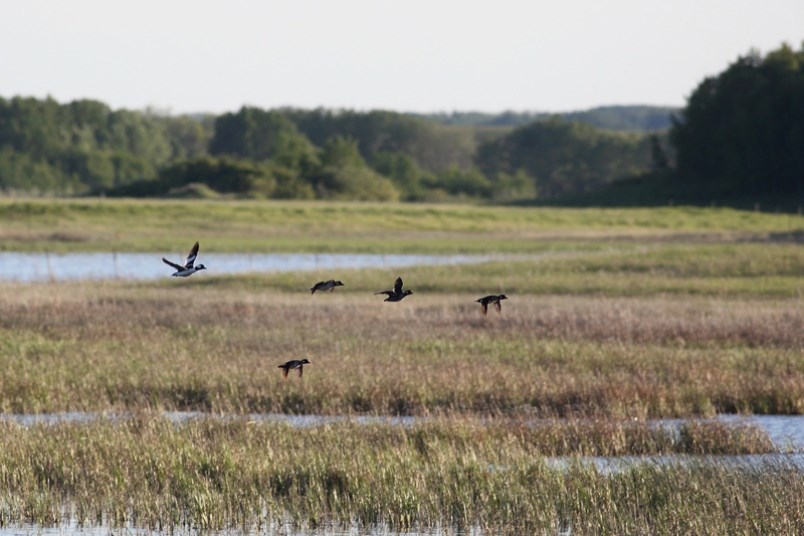YORKTON - It’s always seemed that agriculture and nature were somehow inter-connected.
While the relationship might not exactly be complimentary – deer eat bales and geese eat grain – there is also an understanding that nature is important.
At least that was the case when on the farm in my youth a half century ago.
Back then farmers were of course quite different from today. They were significantly smaller, and while the trend to specialization was starting, most farms were mixed.
That was important in an acceptance of nature where wetlands and clumps of bush were fine for livestock pastures and nature too.
As the move to huge equipment covering massive acres on grain only farms evolved there was no desire to work around sloughs and trees and so they have often been plowed under – the loser being the creatures who used both as home.
It is somewhat ironic I suppose when you consider I recall my grandfather talking about having to clear his homestead quarter of trees with axe and horse.
My father’s generation was the one planting rows of trees across farmland to create a windbreak to reduce wind erosion after the devastation of the drought of the 1930s.
And my generation tearing out those windbreak rows because they were an issue for new supersize equipment.
Of course it is about balance and farmers have a business to run, and a living to make.
That said though, nature is important and both the farm sector and society have to always keep that in mind.
That is why a couple of ‘days’, one this past Saturday and one upcoming are important.
The first is Arbor Week May 20-28 which is an observance in which individuals and groups are encouraged to plant trees.
“The establishment of Arbor Day in Canada is credited to Sir George W. Ross, later Premier of Ontario, when he was Minister of Education (1883-1899). Ross established Arbor Day ‘to give the school children an interest in making and keeping the school grounds attractive.’ The planting of trees and of having school gardens soon became an important part of the life of many schools across Canada,” wrote Walter Farquarson in a Yellowhead Flyway Birding Trail Association article.
With the increased awareness of the threat of greenhouse gases and how they can impact climate trees are increasingly recognized as important to help address that problem.
Planting and preserving trees is critically important to the planet’s future.
World Migratory Bird Day was May 13.
While as mentioned earlier not all birds are loved by farmers – especially those that munch crops – but imagining a world without migratory birds is not a pleasant future to think of.
All of Saskatchewan and most of Alberta are part of the Central Flyway which encompasses a large portion of North America’s interior. From Canada’s boreal forest and parklands across the Great Plains down to the Texas Gulf Coast, this flyway is home to a large percentage of North America’s ducks and geese, notes ducks.ca
And again the key is finding balance. We need farmers to be successful in producing the food we need, but for a bright future we need trees and birds and nature in general.






